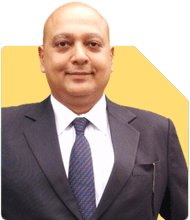Can an Indian student pursue MBBS at Omsk State Medical University in Russia?
Dr Nagarajan J S K |2575 Answers |Ask -Follow
NEET, Medical, Pharmacy Careers - Answered on Dec 30, 2024
He has over 30 years of experience in counselling students towards making the right career choices, particularly in the field of pharmacy.
As the JSS College placement officer, he has helped aspiring professionals prepare for and crack job interviews.
Dr Nagarajan holds a PhD in pharmaceutical sciences from the JSS Academy of Higher Education And Research, Mysore, and is currently guiding five PhD scholars.... more

Hello Sir , my son had opted PCM/PCB in 10+2 exams and has get admission in Punjab University ECE Branch , i am planning to send him Russia in OMSK State Medical University for perusing MBBS , Kindly guide is whether it is good university for Indian students for MBSS or we should continue with ECE in Punjab University
I believe he has been admitted to Punjab University in the ECE branch, right? Congratulations!
I'm curious why you asked about admissions related to MBBS. Even if your child wants to study medicine in foreign countries, they must qualify through the NEET exam to be eligible. Since you didn't share those details, I’m assuming your child has not yet taken the NEET exam. In that case, it might be better for him to continue with his current path rather than pursuing medicine.
After completing a medical program, he would need to pass an exit exam in India to qualify as a doctor, and only then would he be able to do an internship here. Before making any decisions about quitting his admission at Punjab University, I recommend consulting with your son regarding these matters.
You may like to see similar questions and answers below
Sushil Sukhwani | Answer |Ask -Follow
Study Abroad Expert - Answered on Jan 05, 2024
Sushil Sukhwani | Answer |Ask -Follow
Study Abroad Expert - Answered on Sep 11, 2024
Nayagam P P |10849 Answers |Ask -Follow
Career Counsellor - Answered on Sep 19, 2024
Mayank Chandel |2562 Answers |Ask -Follow
IIT-JEE, NEET-UG, SAT, CLAT, CA, CS Exam Expert - Answered on Sep 07, 2024
Dr Dipankar Dutta |1837 Answers |Ask -Follow
Tech Careers and Skill Development Expert - Answered on Dec 05, 2025
Dr Shyam Jamalabad |108 Answers |Ask -Follow
Dentist - Answered on Dec 05, 2025
Dr Shyam Jamalabad |108 Answers |Ask -Follow
Dentist - Answered on Dec 05, 2025
Dr Shyam Jamalabad |108 Answers |Ask -Follow
Dentist - Answered on Dec 05, 2025
Dr Dipankar Dutta |1837 Answers |Ask -Follow
Tech Careers and Skill Development Expert - Answered on Dec 05, 2025
Ulhas Joshi |280 Answers |Ask -Follow
Mutual Fund Expert - Answered on Dec 05, 2025
Dr Dipankar Dutta |1837 Answers |Ask -Follow
Tech Careers and Skill Development Expert - Answered on Dec 04, 2025
Ravi Mittal |676 Answers |Ask -Follow
Dating, Relationships Expert - Answered on Dec 04, 2025
Anu Krishna |1745 Answers |Ask -Follow
Relationships Expert, Mind Coach - Answered on Dec 04, 2025
Anu Krishna |1745 Answers |Ask -Follow
Relationships Expert, Mind Coach - Answered on Dec 04, 2025



























